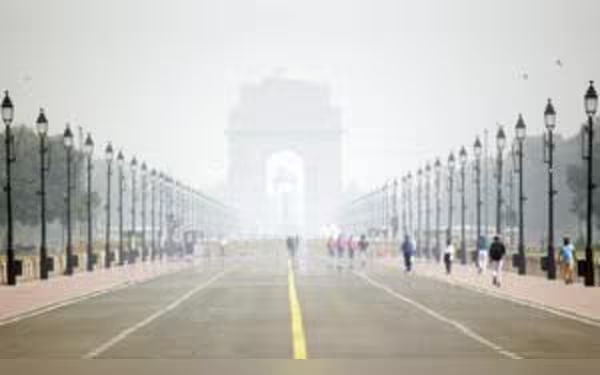Thursday, November 7, 2024 05:47 AM
Delhi-NCR Air Quality Crisis: Smog Expected Until November 10
- Delhi-NCR's AQI exceeds 400, indicating hazardous conditions.
- Severe pollution levels reported post-Diwali celebrations.
- Smog forecasted to persist until at least November 10.
 Image Credits: menafn
Image Credits: menafnDelhi-NCR faces hazardous air quality post-Diwali, with smog expected to last until November 10, raising health concerns among residents.
The air quality in Delhi-NCR has taken a significant downturn, particularly following the recent Diwali celebrations. As temperatures begin to drop, the region is grappling with severe pollution levels that have raised alarms among residents and health officials alike. The Air Quality Index (AQI) has soared past 400 in many areas, indicating hazardous conditions that pose serious health risks.
In the aftermath of Diwali, a festival known for its fireworks, the air quality in Delhi and its neighboring cities has deteriorated sharply. Reports indicate that the AQI in Gurugram has reached a staggering 499, categorizing it as 'severe plus.' Meanwhile, Noida's AQI stands at 297, marking it as 'poor,' and Greater Noida is not far behind with an AQI of 346, classified as 'very poor.' The Central Pollution Control Board (CPCB) has noted that 11 out of 39 monitoring stations in Delhi recorded AQI levels exceeding 400, placing them firmly in the 'severe' pollution category.
Forecasts from the Meteorological Department suggest that the smog will persist in the region until at least November 10. On a recent Tuesday morning, several areas reported alarming AQI levels: Mundka at 466, DIT at 442, Anand Vihar at 438, and New Sarup Nagar at 395. Other locations, such as Kohat Enclave and Bhalswa Landfill, also reported severe air quality levels, further compounding the issue.
The CPCB classifies air quality into several categories: 'good' (0-50), 'satisfactory' (51-100), 'moderate' (101-200), 'poor' (201-300), 'very poor' (301-400), and 'severe' (401-450). Any AQI above 450 is categorized as 'severe plus.' This classification system highlights the urgent need for action as the health of millions hangs in the balance.
In response to the worsening air quality, the Commission for Air Quality Management (CAQM) has rolled out various initiatives aimed at curbing pollution. These include the Graded Response Action Plan (GRAP), which imposes strict penalties on construction sites, vehicles, and industries that contribute to pollution. Additionally, efforts to control road dust are underway, with around 600 mechanical road-sweeping machines, water sprinklers, and anti-smog guns deployed across the National Capital Region (NCR).
As the situation continues to unfold, it is crucial for residents to stay informed and take necessary precautions. The health implications of prolonged exposure to such poor air quality can be severe, particularly for vulnerable populations such as children and the elderly. It is a stark reminder of the importance of environmental awareness and the collective responsibility we share in combating pollution. Only through concerted efforts can we hope to improve air quality and ensure a healthier future for all.













